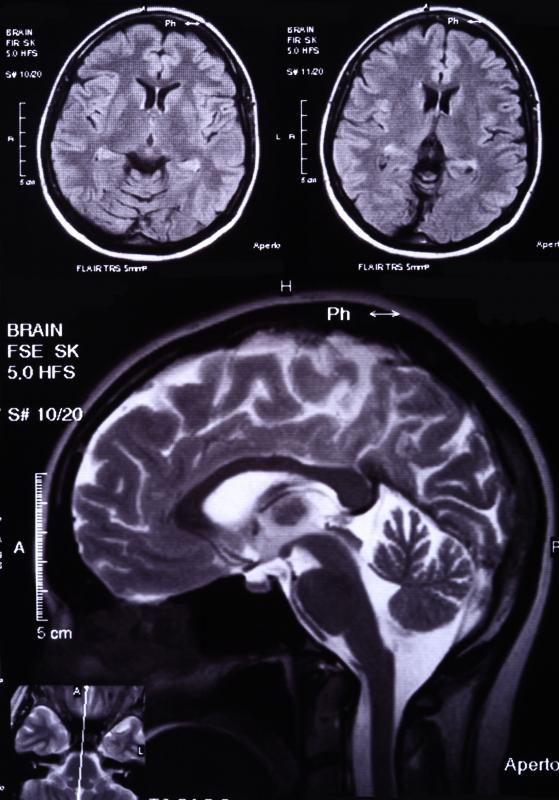At TheHealthBoard, we're committed to delivering accurate, trustworthy information. Our expert-authored content is rigorously fact-checked and sourced from credible authorities. Discover how we uphold the highest standards in providing you with reliable knowledge.
What is the Cerebellopontine Angle?
The hemispheres of the brain contain highly specialized neural structures that direct the body’s physical and mental activities, such as those of the cerebellum, the medulla, and the pons. The conjunction of these structures at the base of the skull, or petrous bone, forms a pyramid shaped space called the cerebellopontine angle. In neuroanatomy — the science that studies the nervous system — this space is termed a “cistern” or basin, which is filled with cerebrospinal fluid, a clear liquid surrounding the brain that is also channeled down the spinal canal.
For medically unclear reasons, a large number of nonmalignant, or non-cancer-causing, tumors tend to develop in the cerebellopontine angle area. Although the vast majority of these tumors are termed benign, because they do not spread to other parts of the body, they can affect critical brain functions, such as those of the cranial nerves. The eighth cranial nerve governing hearing and balance is particularly affected by a type of tumor in this area called an acoustic neuroma, which can produce ringing in the ears and dizziness as well as other conditions. Tumors can also affect the other cranial nerves, and the resulting complex of problems is termed a cerebellopontine angle syndrome.

One cause of the cerebellopontine angle syndrome is that tumors expand as they grow, and since there is little room in the brain to accommodate expanding tissues, tumor growths begin to compress nearby structures. This puts pressure on those structures, including the cranial nerves, affecting their function. A type of tumor that mainly affects cranial nerves one through five is a meningioma. Epidermoid cysts are another type of tumor-like growth occurring in this area. Both types of tumors are generally nonmalignant and tend to occur in middle age. These tumors are usually treated with surgery, and sometimes with radiation therapy.

A lipoma, or fatty tissue growth, can occur within the cerebellopontine angle, although this is quite rare. Those that do occur are felt to be congenital in origin, or present at one’s birth. They grow very slowly, and surgery is performed to remove those causing nerve problems, such as hearing difficulties.
Also rare is the development of malignant cancers within the cerebellopontine angle, such as a brain cancer, called a glioblastoma multiforme, which affects mainly young children and elders. This typically has a low survival rate. Glioblastoma multiforme is a form of astrocytoma, which received this name due to the cancer cells being shaped like a star.

Another severe malignancy that can affect the cerebellopontine angle is caused when cancer invades this brain region. This metastasis, or spread, occurs when cancer cells are passed from an original site, such as the breast, to other body sites including the brain. The major difference between tumors in the cerebellopontine angle and metastatic spread of cancer to this region is that tumors cause damage from growth and pressure, while cancer cells invade and destroy the cells in vital brain structures.
AS FEATURED ON:
AS FEATURED ON:













Discuss this Article
Post your comments